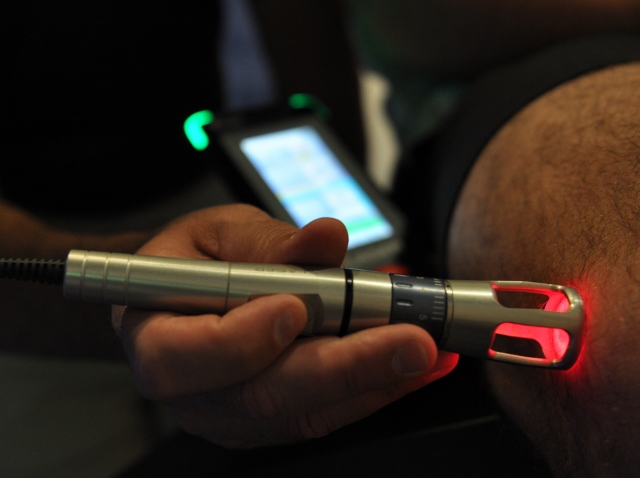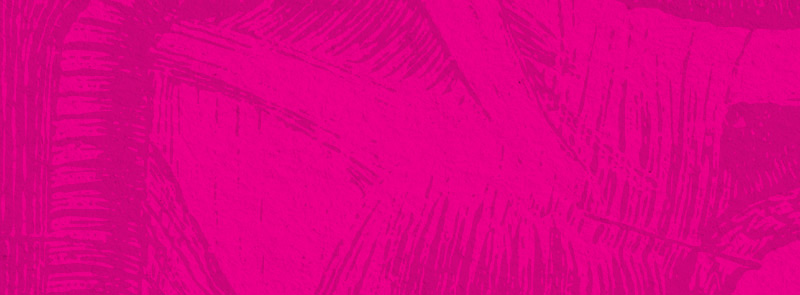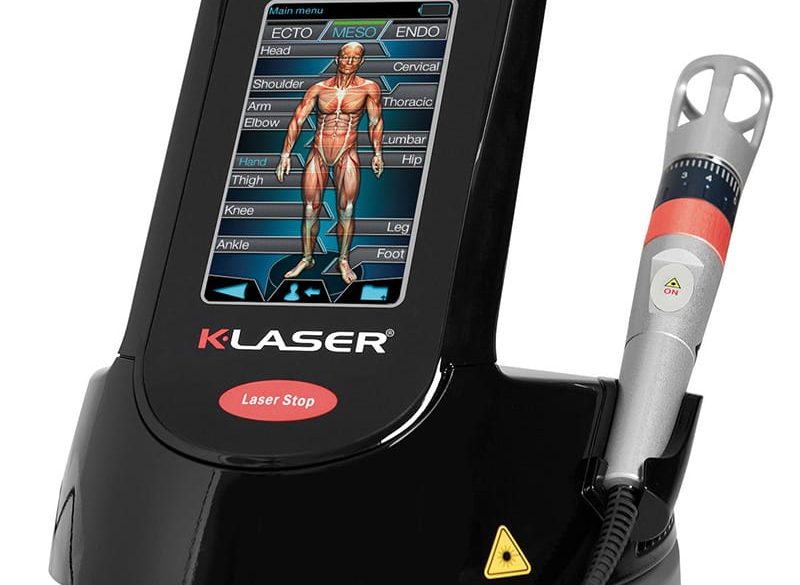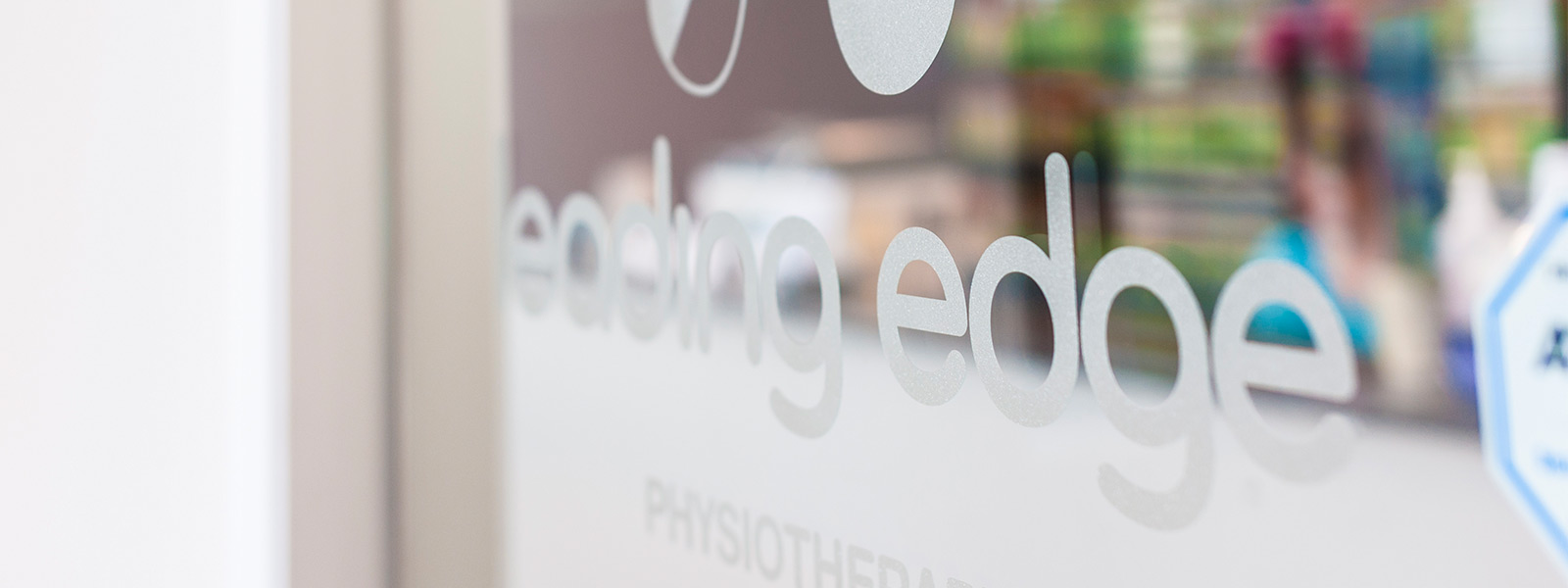
Available at Royal Glenora, St. Albert, Capilano Rehabilitation Centre, Windermere, Sherwood Park, and Old Strathcona locations.
K-Laser™ / Summus Laser | Star Trek – eat your heart out
what is the K-Laser™?
The K-Laser™ is an advanced technology Deep Tissue Laser Therapy System that can effectively bio-stimulate and repair damaged tissue while reducing pain.
what is the Summus Laser P4?
Another of our laser technologies is our Summus Platinum (P4). Not just a Class IV therapy laser, but also a technology platform that redefines the therapy laser industry. Delivering usage metrics and tools on the laser interface to help your practice succeed with Laser Therapy.
what is Laser Therapy?
While you may be picturing something out of a Star Trek episode, Laser Therapy or “photobiomodulation” is the use of specific wavelengths of light (red and near-infrared) to create therapeutic effects. These effects include improved healing time, pain reduction, increased circulation and decreased swelling. Different wavelengths can have different effects and different results.
benefits of Laser Therapy
Laser Therapy is proven to biostimulate tissue repair and growth. In acute conditions, the K-Laser accelerates wound healing and decreases inflammation, pain, and scar tissue formation. In the management of chronic pain, our Class IV Laser Therapy devices can provide effective results, is non-addictive and virtually free of side effects.
has laser effectiveness been demonstrated scientifically?
Yes. There are thousands of published studies demonstrating the clinical effectiveness of Laser Therapy. Among these, there are more than one hundred rigorously controlled, scientific studies that document the effectiveness of laser for many clinical conditions. Leading Edge Physiotherapy’s K-Laser™ is Health Canada approved through the Therapeutic Products Directorate of the Medical Devices Bureau. Our Summus Platinum Laser has also received Health Canada approval through the same rigorous process. We won’t pretend that the evidence is conclusive for all of the claims other practitioners may make, but in our hands it is used for evidence based purposes.
what are the cellular effects of Laser Therapy?
During laser treatment, the infrared laser light interacts with tissues at the cellular level and metabolic activity increases within the cell, improving the transport of nutrients across the cell membrane. This initiates the production of cellular energy (ATP) that leads to a cascade of beneficial effects, increasing cellular function and health.
what are the therapeutic effects of Laser Therapy?
During each painless treatment laser energy increases circulation, drawing water, oxygen, and nutrients to the damaged area. This creates a soothing and optimal healing environment that reduces inflammation, swelling, muscle spasms, stiffness, and pain. As the injured area returns to normal, function is restored and pain is relieved. Laser treatment enhances and dramatically accelerates the body’s own natural healing powers, producing long lasting pain relief.
K-Laser™ advanced technology
The K-Laser™ system is recognized as a leading product in pain management, tissue repair, safe treatments, and effective treatment responses. Specifically, the K-Laser System offers:
- Four-Wavelength Beam that Penetrates Deep into the Tissue
- Continuous & Modulating Frequencies to Promote Pain Control and Healing
- SuperPulse Mode for Deeper Therapeutic Penetration
- High Power Delivering Larger Doses and Short Treatment Times
- Safe and Positive Treatment Outcomes
K-Laser™ can reduce arthritic pain and so much more
In addition to arthritic pain reduction, Laser Therapy can also help reduce pain in the following:
- Herpes Zoster (Shingles)
- Trigeminal Neuralgia
- Chronic Tendinopathies
- Repetitive Stress Injuries
learn more about the Summus Platinum Laser:
Just a quick search of peer reviewed research yields the following results:
https://www.ncbi.nlm.nih.gov/pmc/articles/PMC4881709/
https://www.ncbi.nlm.nih.gov/pmc/articles/PMC3418129/
https://care.diabetesjournals.org/content/38/10/e152
https://openorthopaedicsjournal.com/VOLUME/7/PAGE/396/
You might not be able to click the below but just in case you love to hit the library stacks:
Effect of Low Level Laser Application at the End of Surgery to Reduce Pain after Tonsillectomy in Adults
Dawood Aghamohammadi1, Mohammad Eidi1, Alireza Lotfi2, Hamzeh Hosseinzadeh1 Reza Movasaghi1, Negar Motighini1, Stephane Ayoub Bouraima3
1Department of Anesthesia, Tabriz University of Medical Sciences, Tabriz,Iran
2Department of Otorhinolaryngology, Tabriz University of Medical Sciences, Tabriz, Iran
3Laser Application in Medical Sciences Research Center, Shahid Beheshti University of Medical Sciences, Tehran, Iran
The effect of photobiomodulation on chemotherapy-induced peripheral neuropathy: A randomized, sham-controlled clinical trial
Peter A. Argenta, MD a,?, Karla V. Ballman, PhD b, Melissa A. Geller, MD a, Linda F. Carson, MD a, Rahel Ghebre, MD a, Sally A. Mullany, MD a, Deanna G.K. Teoh, MD a, Boris J.N. Winterhoff, MD a, Colleen L. Rivard, MD a, Britt K. Erickson, MD a
a DivisionofGynecologicOncology,DepartmentofObstetrics,Gynecology,andWomen’sHealth,UniversityofMinnesota,Minneapolis,MN,UnitedStates b DivisionofBiostatisticsandEpidemiology,DepartmentofHealthcarePolicyandResearch,WeillCornellMedicalSchool,NewYork,NY
Class IV laser therapy as treatment for chemotherapy-induced oral mucositis in onco-haematological paediatric patients: a prospective study
MADDALENA CHERMETZ1, MARGHERITA GOBBO1, LUCA RONFANI2, GIULIA OTTAVIANI1, GIULIO A. ZANAZZO2, FEDERICO VERZEGNASSI2, NATHANIEL S. TREISTER3, ROBERTO DI LENARDA1, MATTEO BIASOTTO1 & SERENA ZACCHIGNA4
1Division of Oral Medicine and Pathology, Department of Dental Science, University of Trieste, Trieste, Italy, 2Institute for Maternal and Child Health, IRCCS Burlo Garofolo, Trieste, Italy, 3Division of Oral Medicine & Dentistry, Brigham and Women’s Hospital, Boston, MA, USA, and 4International Center for Genetic Engineering and biotechnology (ICGEB), Trieste, Italy
Acneiform rash due to epidermal growth factor receptor inhibitors: high-level laser therapy
as an innovative approach
M Gobbo & G Ottaviani & G Mustacchi & R Di Lenarda & M Biasotto
Received: 7 June 2011 / Accepted: 3 November 2011 / Published online: 26 November 2011 # Springer-Verlag London Ltd 2011
Same strategy for pitfalls of radiotherapy in different anatomical districts
Margherita Gobbo1 & Giulia Ottaviani1 & Katia Rupel1 & Francesca Ciriello2 & Aulo Beorchia2 & Roberto Di Lenarda1 & Serena Zacchigna3 & Matteo Biasotto1
Blue diode laser versus traditional infrared diode laser and quantic molecular resonance scalpel: clinical and histological findings after excisional biopsy of benign oral lesions
Margherita Gobbo Rossana Bussani Giuseppe Perinetti Katia Rupel Lorenzo Bevilaqua Giulia Ottaviani Matteo Biasotto
Margherita Gobbo, Rossana Bussani, Giuseppe Perinetti, Katia Rupel, Lorenzo Bevilaqua,
Giulia Ottaviani, Matteo Biasotto, “Blue diode laser versus traditional infrared diode laser and quantic molecular resonance scalpel: clinical and histological findings after excisional biopsy of benign
oral lesions,” J. Biomed. Opt. 22(12), 121602 (2017), doi: 10.1117/1.JBO.22.12.121602.
Multicenter randomized, double-blind controlled trial to evaluate the efficacy of laser therapy for the treatment of severe oral mucositis induced by chemotherapy in children: laMPO RCT
Margherita Gobbo1 Fraia Melchionda5 Rosamaria Mura9 Maria Livia Mariuzzi12 Nunzia Decembrino15 Patrizia Defabianis18
Federico Verzegnassi2 Luca Ronfani3 Davide Zanon4 Simone Bagattoni6 Alessandra Majorana7 Elena Bardellini8
Alessandra Piras10 Maria Grazia Petris11 Angelica Barone13 Elisabetta Merigo14
Marina Consuelo Vitale16 Massimo Berger17
Matteo Biasotto19 Giulia Ottaviani20 Giulio Andrea Zanazzo21
1 Division of Oral Medicine and Pathology, Department of Dental Science, University of Trieste, Trieste, Italy 2 Pediatric Hemato-Oncology Unit, IRCCS materno infantile Burlo Garofolo, Trieste, Italy
3 Epidemiology and Biostatistics Unit, IRCCS materno infantile Burlo Garofolo, Trieste, Italy
4 Pharmacy and Clinical Pharmacology, IRCCS materno infantile Burlo Garofolo, Trieste, Italy
5 Pediatric Oncology and Haematology Unit “Lalla Seràgnoli,” Department of Pediatrics, University of Bologna, Sant’Orsola Malpighi Hospital, Bologna, Italy
6 Unit of Dental Care for Special Needs Patients and Paediatric Dentistry, Department of Biomedical and NeuroMotor Sciences (DiBiNeM), University of Bologna,
Bologna, Italy
7 Department of Medical and Surgical Specialities, Radiological Science and Public Health, Dental School University of Brescia, Brescia, Italy
8 Department of Biomedical, Biotechnological, and Translational Sciences, Dental School, University of Brescia, Brescia, Italy
9 Paediatric Haematology and Oncology Unit, Ospedale Pediatrico Microcitemico, Cagliari, Italy
10 Division of Dental Medicine, Department of Medical Science, LUdeS HEI Foundation Malta
11 Pediatric hematology-Oncology, Azienda Ospedaliera Padova, Padova, Italy
12 ClinicaOdontoiatrica Azienda Ospedaliera di Padova, Padova, Italy
13 Pediatric and Onco-Hematology Unit, University of Parma, Parma, Italy
14 Dental School, Department of Biomedical, Biotechnological and Translational Sciences, University of Parma, Parma, Italy
15 Pediatric Hematology Oncology Unit, IRCCS Policlinico San Matteo, University of Pavia, Pavia, Italy
16 Sezione di Ortognatodonzia e Odontoiatria Pediatrica, Dipartimento di Scienze Clinico-Chirurgiche, Diagnostiche e Pediatriche, Università degli Studi di Pavia, Pavia, Italy
17 Oncoematologia Pediatrica, Ospedale Infantile Regina Margherita, Torino, Italy
18 Section of Pediatric Dentistry, Dental School, University of Torino, Torino, Italy
19 Division of Oral Medicine and Pathology, Department of Dental Science, University of Trieste, Trieste, Italy 20 Division of Oral Medicine and Pathology, Department of Dental Science, University of Trieste, Trieste, Italy 21 Pediatric Hemato-Oncology Unit, IRCCS materno infantile Burlo Garofolo, Trieste, Italy
Evaluation of nutritional status in head and neck radio-treated patients affected by oral mucositis: efficacy of class IV
laser therapy
M. Gobbo & G. Ottaviani & G. Perinetti & F. Ciriello & A. Beorchia & M. Giacca & R. Di Lenarda & K. Rupel & G. Tirelli & S. Zacchigna & M. Biasotto
Received: 13 May 2013 / Accepted: 28 January 2014 # Springer-Verlag Berlin Heidelberg 2014
Can laser therapy be the answer for radiodermatitis in anal cancer patients? Two case reports
Kann Lasertherapie die Antwort auf Radiodermatitis bei Patienten mit Analkarzinom sein? Zwei Fallbeispiele
Margherita Gobbo, Giulia Ottaviani, Katia Rupel, Matteo Biasotto* and Alessandra Guglielmi
DOI 10.1515/plm-2016-0009
Received February 24, 2016; revised April 8, 2016; accepted April 19, 2016; previously published online May 28, 2016
Clinical effectiveness of laser acupuncture in the treatment of temporomandibular joint disorder
Yu-Feng Huang a,b, Jung-Chih Lin c, Hui-Wen Yang a,b, Yu-Hsien Lee a,b, Chuan-Hang Yu a,b,*
a School of Dentistry, College of Oral Medicine, Chung Shan Medical University, Taichung, Taiwan
b Department of Dentistry, Oral Medicine Center, Chung Shan Medical University Hospital, Taichung, Taiwan
c Department of Integrated Chinese and Western Medicine, Chung Shan Medical University Hospital, Taichung, Taiwan
Laser Therapy Inhibits Tumor Growth in Mice by Promoting Immune Surveillance and Vessel Normalization
Giulia Ottaviani a,b, Valentina Martinelli b, Katia Rupel a,b, Nicoletta Caronni d, Asma Naseem d, Lorenzo Zandonà c, Giuseppe Perinetti a, Margherita Gobbo a, Roberto Di Lenarda a, Rossana Bussani c, Federica Benvenuti d, Mauro Giacca c,e, Matteo Biasotto a, Serena Zacchigna b,c,?
a DivisionofOralMedicineandPathology,UniversityHospitalofTrieste,Piazzadell’Ospitale1,34129Trieste,Italy
b CardiovascularBiology,InternationalCentreforGeneticEngineeringandBiotechnology(ICGEB),Padriciano99,34149Trieste,Italy c DepartmentofMedical,SurgicalandHealthSciences,UniversityHospitalofTrieste,StradadiFiume,447,34149Trieste,Italy
d CellularImmunology,InternationalCentreforGeneticEngineeringandBiotechnology(ICGEB),Padriciano99,34149Trieste,Italy
e MolecularMedicine,InternationalCentreforGeneticEngineeringandBiotechnology(ICGEB),Padriciano99,34149Trieste,Italy
Photobiomodulation at Multiple Wavelengths Differentially Modulates Oxidative Stress In Vitro and In Vivo
Katia Rupel,1 Luisa Zupin,1 Andrea Colliva,2 Anselmo Kamada,3 Augusto Poropat,1
Giulia Ottaviani,1 Margherita Gobbo,1 Lidia Fanfoni,1 Rossella Gratton,4 Massimo Santoro,5 Roberto Di Lenarda ,1 Matteo Biasotto,1 and Serena Zacchigna 1,2
1Department of Medical, Surgical and Health Sciences, University of Trieste, 34127 Trieste, Italy
2Cardiovascular Biology Laboratory, International Centre for Genetic Engineering and Biotechnology (ICGEB), 34149 Trieste, Italy 3Department of Genetics, Federal University of Pernambuco, Recife, Brazil
4Institute for Maternal and Child Health, IRCCS “Burlo Garofolo”, 34137 Trieste, Italy
5Laboratory of Angiogenesis and Redox Metabolism, Department of Biology, University of Padua, 35131 Padova, Italy
Correspondence should be addressed to Serena Zacchigna; zacchign@icgeb.org
Received 6 July 2018; Accepted 19 September 2018; Published 11 November 2018
Katia Rupel, Margherita Gobbo, Giulia Ottaviani and Matteo Biasotto*
Laser surgical treatment of chronic graft-versus-host disease (cGvHD)-induced buccal mucosal sclerosis
Laser-chirurgische Behandlung der cGvHD-induzierten Sklerose der Mundschleimhaut
Photobiomodulation therapy promotes in vitro wound healing in nicastrin KO HaCaT cells
Paola M. Tricarico1* | Luisa Zupin1 | Giulia Ottaviani1 | Sabrina Pacor1 | Francette Jean-Louis2 | Michele Boniotto3 | Sergio Crovella1,4
1University of Trieste, Trieste, Italy
2INSERM U955 Eq.16, Institut Mondor de Recherche Biomédicale and VRI (Vaccine Research Institute), Créteil, France
3INSERM U955 Eq. 16, Institut Mondor de Recherche Biomédicale and Université Paris Est- Créteil (UPEC), Faculté de Médecine, Créteil, France
4Institute for Maternal and Child Health “Burlo Garofolo”, Trieste, Italy
*Correspondence
Paola M. Tricarico, University of Trieste, Piazzale Europa 1, 34138 Trieste, Italy.
Email: tricaricopa@gmail.com
Funding information
University funding for scientific research project, Grant/Award Number: U22SCFRA15 and IRCCS Burlo Garofolo/Italian Ministry of Health (RC 15/ 2017)
Preliminary study in a new protocol for the treatment
of oral mucositis in pediatric patients undergoing hematopoietic stem cell transplantation (HSCT) and chemotherapy (CT)
Marina Consuelo Vitale1 & Carola Modaffari1 & Nunzia Decembrino2 & Feng Xiao Zhou1 & Marco Zecca2 & Patrizia Defabianis3
Received: 5 May 2016 / Accepted: 15 June 2017 # Springer-Verlag London Ltd. 2017
Antiviral properties of blue laser in an in vitro model of HSV-1 infection
Photobiomodulation therapy reduces viral load and cell death in ZIKV-infected glioblastoma cell line
Luisa Zupin1 & Ilaria Caracciolo1 & Paola Maura Tricarico1 & Giulia Ottaviani1 & Pierlanfranco D’Agaro1 & Sergio Crovella1,2
Received: 21 May 2018 / Accepted: 21 June 2018
# Springer-Verlag London Ltd., part of Springer Nature 2018
In this field, K-Laser™ provides exceptional quality technology, making it possible for the professional to perform very high level treatments, confirmed by the satisfaction reported by thousands of other customers treated so far. The protocols in K-Laser™ devices are the result of much experience which combines basic and clinical research, intended to offer professionals the most efficient therapeutic tool commercially available on the market today. Furthermore, K-Laser™ organizes focused training courses, both theoretical and practical, to assure our clinicians of all necessary knowledge, which will enable us to immediately achieve optimal results.
The K-Laser gives us several advantages over other laser technology. These include:
- First 4 wavelength device in the world (660 nm, 800 nm, 905 nm, 970 nm)
- Reliable
- High power (20 Watt)
- Portable
- Hygienic
1,300+ Phased Protocols
Designed and tested by doctors for doctors. Plus, we are able to create and save our own custom protocols.
Optimal Power
The power range of our lasers provide an effective & safe therapeutic treatment.
Touchscreen
Intuitive touchscreen interface allows you to quickly set-up an expert treatment protocol.
4 Wavelengths
650nm Accelerates Surface Healing, 810nm Increases ATP Production, 915nm Enhances Oxygen Delivery, 980nm Improves Circulation.
With credit to The Open Orthopaedics Journal an Open Access online journal, which publishes high quality research articles, reviews/mini-reviews, letters and guest edited single topic issues in all important areas of experimental and clinical research and surgery in orthopaedics, the following excerpt can fill you in:
The degree of biological reaction to decrease pain and inflammation, stimulate collagen metabolism and wound healing and promote fracture healing is believed to depend on a number of factors including power density (W/cm2), the wavelength (nm), the energy density (J/cm2), and site of application [17,18]. The three main mechanisms by which laser produces analgesic effects [19, 20] are believed to be: stimulating endogenous opioid release, elevating pain thresholds [21], and modifying the release of noxious mediators such as bradykinin [22] and histamine [23]. Pain modulation may also occur due to changes in nerve conduction velocity. There have been reports noting that administering laser to nerves resulted in altering the action potential conduction velocity [23] however, several other reports have not demonstrated a clinically important effect of laser on nerve conduction velocity [24, 25]. In addition, there have been some exciting experimental reports which suggest that laser therapy may improve recovery following nerve trauma [26]. Laser therapy has also been found to have an effect on peripheral motor nerve healing [8, 27]. One randomized controlled trial (RCT) assessing HeNe laser on rats with crush injuries found that laser treatment lead to an increased amplitude and velocity of action potentials along the injured motor nerve and an increase in the speed of nerve healing [28]. In summary, LLLT slows down the transmission of pain signals through the autonomic nervous system, regulates serotonin and norepinephrine, and increases the pain threshold [8, 23, 27].
LLLT is also used for inflammation, oedema, swelling, and tissue healing. LLLT application is believed to limit the release of inflammatory mediators, such as bradykinin and histamine, decreasing the inflammatory response [8, 22, 23]. However, it has been strongly hypothesized that a decrease in prostaglandin activity during the inflammatory process is the main anti-inflammatory effect of laser stimulation. Prostaglandins cause vasodilation at the site of inflammation, facilitating infiltration of inflammatory cells to the surrounding tissue. Studies have shown that a decrease in prostaglandin activity due to laser stimulation may promote healing [8, 29].
LLLT stimulate collagen metabolism, wound healing [30], and promotes fracture healing [8–10]. Researchers have also found an increase in collagen and elastic fibers in injured tissue post-laser treatment in animal studies [28]. Similar results were found in other studies [24, 25].


